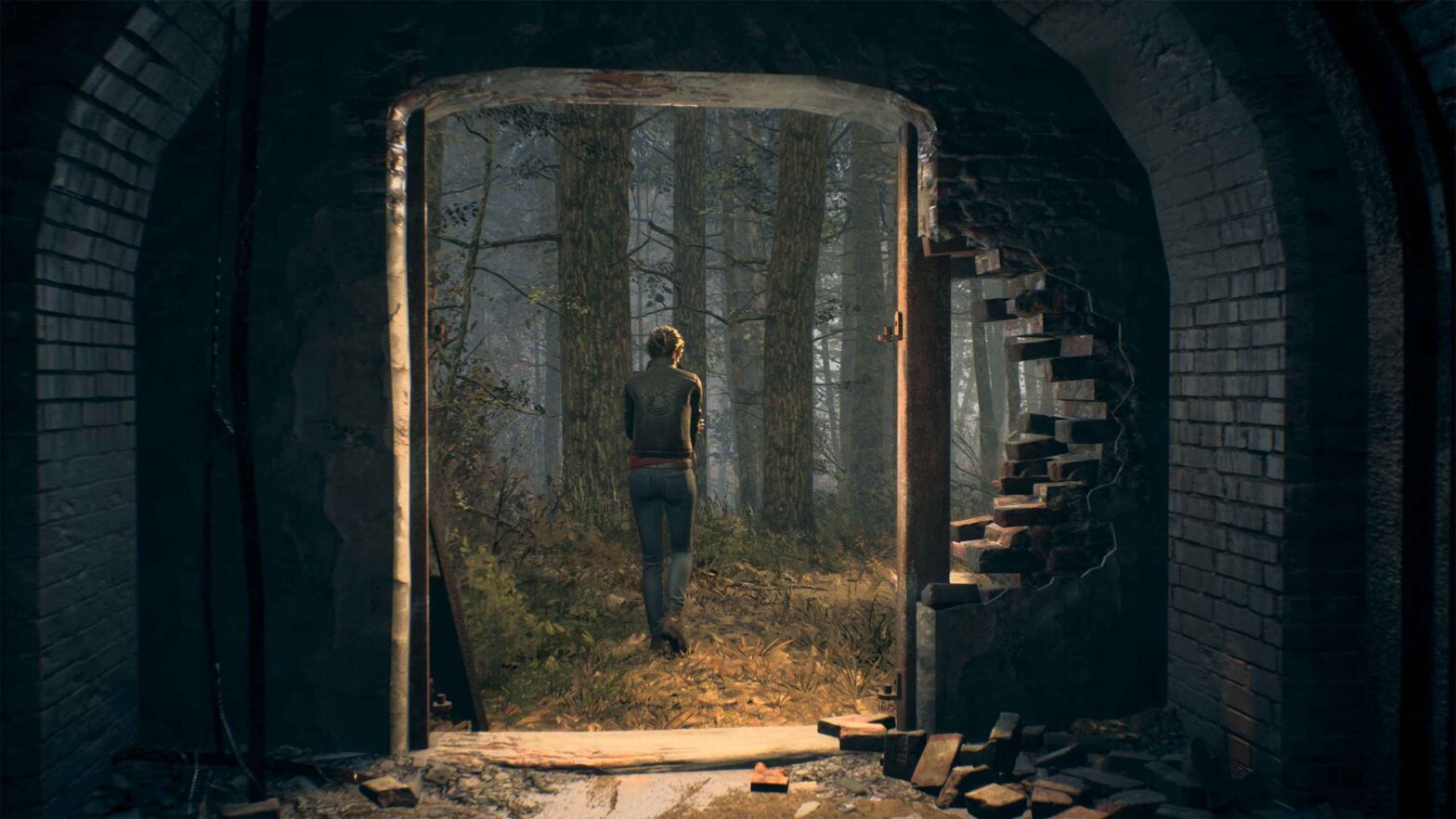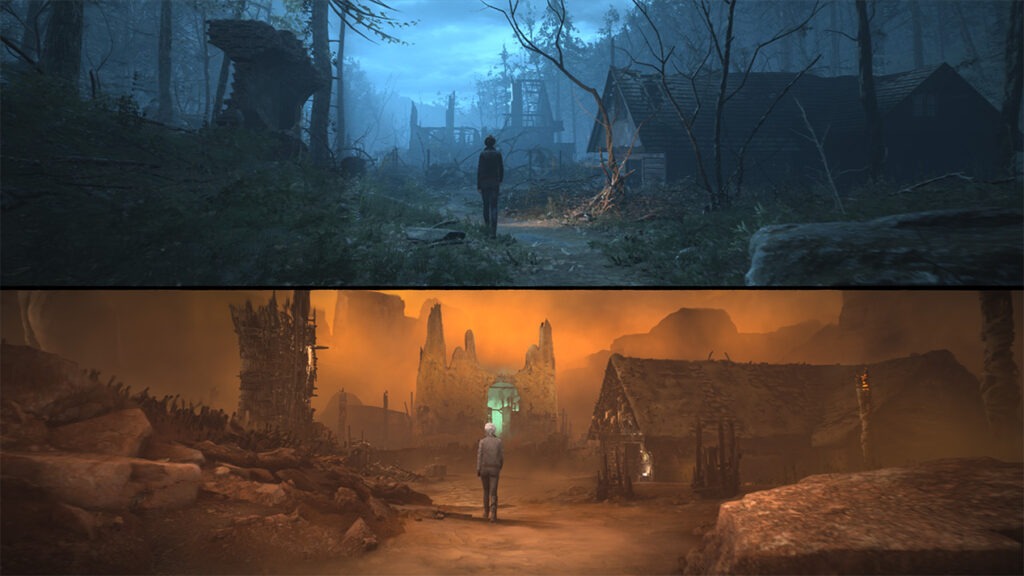The Medium was one of the few games we looked forward to playing after the bitter taste Cyberpunk 2077 left in our mouth towards the end of 2020. The Medium is the first Series X|S console exclusive title, so expectations were high from the start. The Polish Bloober Team did not disappoint.
Graphics
Eerie atmosphere
The impressive scenery and the well-designed characters are the two factors that managed to bring Niwa to life. This game is a full-on trip to 90’s Poland. The Bloober Team manages to create a particularly eerie atmosphere within the Niwa resort, which, although it does not give you a strong feeling of fear, manages to make you feel uncomfortable. The colors on the normal side of the world are almost completely absent, setting the tone for the macabre story, while the constant marks left by the tragic mass murder that took place in the building a few years before Marianne visited it, constantly appear in front of you.

On the “other side”, things are more interesting. In the spirit world, to which Marianne can be transported due to her supernatural powers as a medium, the colors of orange and brown dominate – as opposed to the gray and green that we find in the normal world. The spirit world is a distorted version of the normal world and is the one in which we meet most of the characters, apart from those in the flashback cutscenes, since almost everyone except Marianne is – somehow – dead. Of course, their presence on the other side makes character design more interesting, as it gives artistic freedom to designers to experiment with distorted character appearances. Indeed, the characters are one of the best notes that the Medium manages to hit, culminating in the little girl called Sadness.
The Medium creates the first next-gen cinematic enviroment
Cutscenes are very well made, both in regard to the information transmitted through them, as well as from a directorial point of view. The static, locked camera gives a cinematic vibe to Medium, while at the same time helping to present the environment, as intended by the developers. The locked camera makes you feel limited – perhaps trapped – exactly as a good horror game should make you feel.

My biggest complaint, however, about the environment created by the Bloober Team, is that to a large extent, there is no substantial interaction between the player and the world, other than the few scripted sequences with objects, which you “grab” from the environment. This is where Medium’s limited budget and true nature as a walking sim comes into view. As beautiful as the world is at first glance, without interaction, it looks static, lifeless perhaps, like a painting through which Marianne travels during the game.
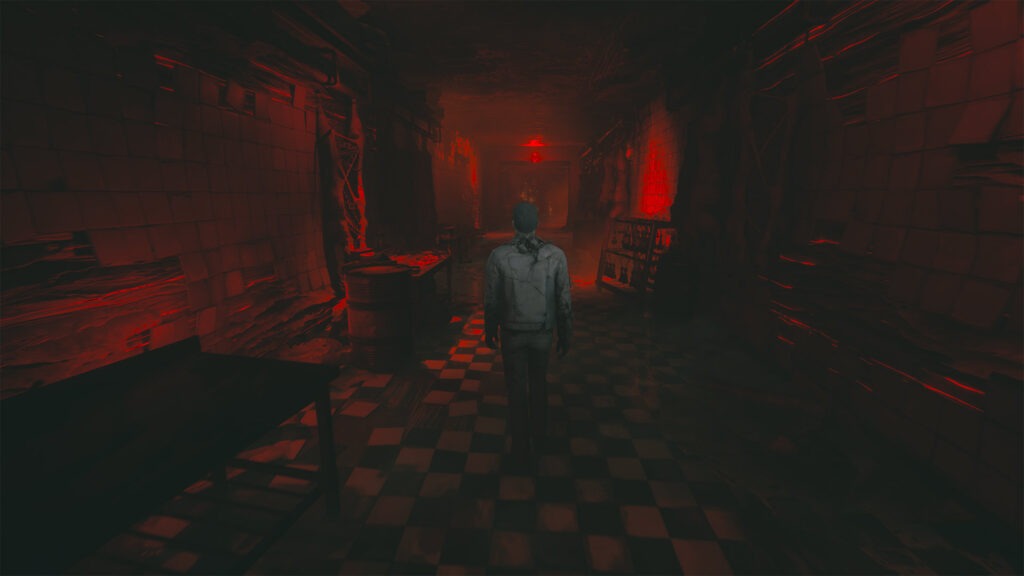
Medium ran on Series X in native 4K, locked at 30fps, with virtually no loading screens. I only noticed a few instances of textures popping in, but it was never abrupt and usually happened after I used Quick Resume to continue the game after I had turned the console off. Ray Tracing, even in the few scenes in which it is fully utilized, gives an amazing sense of realism to what is happening on-screen. HDR capabilities were used sparingly as well due to the lack of bright colors.
Sound – Music
Amazing voice acting and sound design
In The Medium, we have some really great performances from the cast, especially those in the lead roles. Kelly Burke does a great job as Marianne, managing to present through her voice the full depth of the emotional train wreck that the protagonist faces on her trip to Niwa. The interpretation of Sadness by Angeli Wall is also amazing. In the role of the main villain, we find the well-known Troy Baker. The dialogues are also well written, with no unnatural interactions between the characters. When dialogues need to be short and to the point, this is exactly what they are, and when they need to show awkwardness between the people talking, they do so effectively as well.

The general sound design is what acts as a catalyst in the atmosphere, however. Medium uses the awkwardness of complete silence to the fullest. It makes you feel isolated in the abandoned building, while the frequent ambient sounds of the environment that break the silence, alert you. The gentle creaking of the windows, the distant screams, and the steps of Marianne filling the empty corridors do a great job of replacing the classic trope of jumpscares, which, fortunately, are completely absent from this game.
Music composed from the mind behind the music of Silent Hill
The music design is put together by the mind behind Silent Hill’s iconic soundtrack, Akira Yamaoka in collaboration with Arkadiusz Reikowski. Although it is not a complete soundtrack with a large number of tracks, it fits the tone of the game. The few pieces of music that exist, however, are full of emotion. The fact that they start playing when you turn on the radios you find scattered throughout Niwa is another nice touch.
Plot
The abandoned Niwa Resort
In The Medium we are transported all the way to 1990’s Poland and we see the events unfold through the eyes of Marianne, a medium (who would’ve thought really, it’s not like that’s the title of the game) who helps spirits who have not found rest resolve everything that keeps them trapped in the world between the living and the dead. A mysterious phone call will make her travel to Niwa Workers’ Recreation Center, a remnant of Communist Poland.
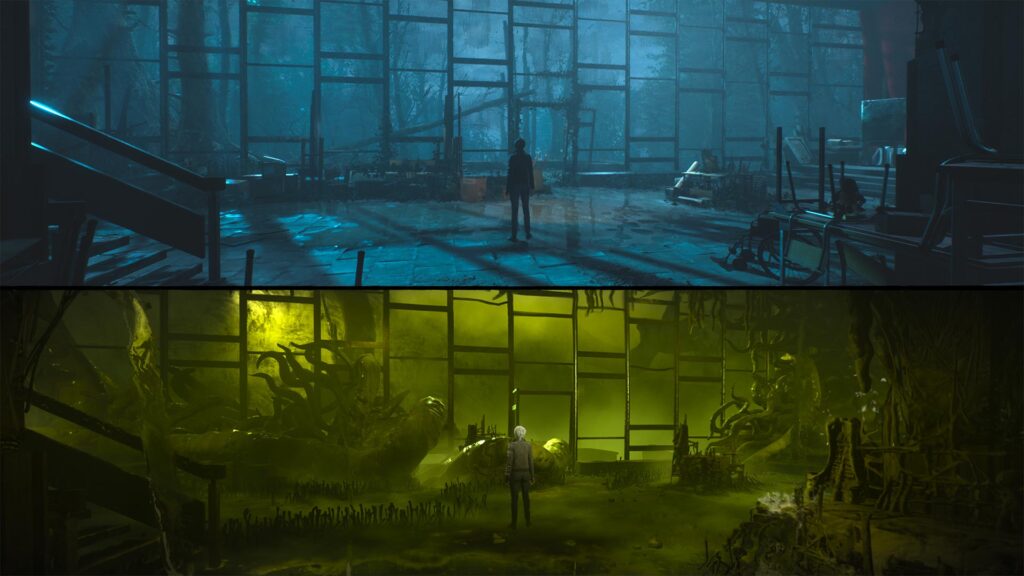
There, she will meet the spirit of Sadness, a little girl who had fallen victim to the massacre that took place in Niwa several years ago. Sadness will help her find out the truth about Thomas, the resort’s manager, who was also the one who called her at the beginning of the story. Along the way, she will discover various other spirits trapped in Niwa and help them find rest, while she will be confronted by the Maw, a not-so-friendly spirit, who haunts Niwa and has some pretty weird plans in store for Marianne.
Short duration but well-written characters
The duration of the story is not long enough to be tiring (6-7 hours), in fact, what is particularly interesting is the way in which it evolves, from a seemingly commonplace horror game story to one that looks more like a mystery-solving one. You do not run away from the evil monster that is chasing you, instead, you try to unravel the mystery behind the monster and drive it out of this world. I really liked that. The plot also does not hesitate to touch on more sensitive issues, which I can not mention here, since I’m trying to keep the review spoiler-free. I also enjoyed the plot twists in the story, which are not made for the sake of creating an engaging narration but are fully explained by the end of the game. Another nice touch is that the end of the game is not exactly “set in stone”.
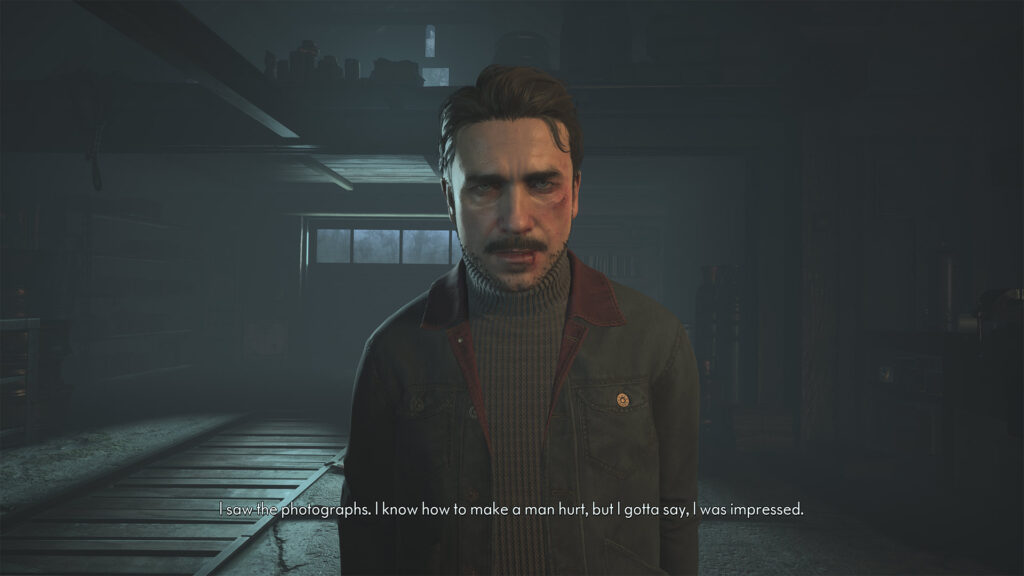
Marianne never goes out of character: from beginning to end her motives are clear, just like Thomas, from the middle of the story onwards. In fact, she becomes more emotional as the story progresses. The story does a good job of explaining why things end the way they are, from why Marianne has supernatural powers, even how Niwa ended up in an abandoned state. At the same time, there is a satisfactory character progression. As the story progresses, even with the different timelines used through flashbacks, the characters mature and their actions are almost always the result of their suffering. There is no time to wonder about someone “why did he do that now?”.
Rough pace
Unfortunately, the story runs into a bit of trouble regarding the pace. Instead of gradually increasing the speed as you approach the climax, it goes at a steadily slow pace until about the middle of the game, where it simply starts and go hard a bit hard on the throttle. As a result, everything we do before the last half of the game seems like a side quest. For a game with such a short duration, this is an important issue. The plot is small in length, without unnecessary elements. When pace is not steadily rising, or even steady at speed to keep the player committed, it makes important elements of the plot seem insignificant.
Gameplay
Dual Reality gameplay, but simple puzzles
The Medium is basically a walking sim, but with a very interesting twist. Dual Reality, as the Bloober Team calls it, allows Marianne, in some parts of the game, to move simultaneously on both “sides” of reality, splitting the screen in two. Like a classic split-screen game, but with one player this time. This mechanism gives developers the opportunity to create unique puzzles, splitting the solution between the two realities, forcing Marianne to move between them. As interesting as this mechanism is, unfortunately, I did not see it used as much as I would like.
While its implementation is correct, as the two worlds are slightly similar to each other if we take into account that the spirit world is a distorted representation of reality and this adequately reflects the plot, its use is incomplete, since the puzzles using the two realities did not require any special glimmers of intelligence to solve them. Dual reality is mainly used to highlight Marianne’s ability to see things that do not exist in the real world.

With that said, let us note that the difficulty of puzzles is generally at very low levels. Marianne has to solve some puzzles to advance in the story, but apparently, the puzzles are not as important as the story. They are there simply to offer an additional challenge for the player and to act as a complement, as “breaks” from the story perhaps, without ever getting in its way. Bloober Team focused more on the narrative part, and that is obvious.
The Medium’s world is beautiful, but static
Marianne has some powers on the “other side” that help her face the obstacles in her way. Specifically, there’s a shield and an energy blast, which protect her from anything hostile for a short amount of time, or give electricity where it’s needed respectively. These powers, however, are rarely used during the game. The items that we collect throughout the game are also few in number. Most of them are collectibles that help with the pace of the story and not in solving most of the puzzles. I found that the ability to combine items in your inventory to be the least used function of this game.

In some instances, Marianne is also allowed to get “out of body” and move only in the spirit world, for a certain period of time of course. This helps solve specific puzzles, which even have a time limit since if Marianne does not return to her body before time runs out, she literally dies. In the flashbacks we have from Thomas’s memories, we can “get in his shoes” and get a few glimpses of the plot from his perspective, something that is extremely interesting, since not only are we not limited to the real world, but also to Marianne’s point of view.
It is worth noting that while playing The Medium, I did not encounter a single bug. It must be one of the few recently released polished games.
Conclusion
While modern horror games rarely manage to have an engaging story and well-crafted gameplay mechanics, as the half-finished one seems to be in vogue in recent years, the Bloober Team still manages to create an engaging storyline with well-written characters that looks more like a mystery game rather than a horror one. At the same time, the gameplay is simple and does not miss the opportunity to stand out where possible.

Its weaknesses, however, are obvious, since gameplay acts as a complement to the narrative, without ever having the leading role. The sound design and music really excel, with the vocal interpretations being on the same level. Visually, the game is very beautiful, it effectively uses the horsepower of the Series X|S, with scenes that create the eerie atmosphere that perfectly matches the tone of the plot. Misfires, while they exist, do not particularly deduct any “points” from the experience as a whole, which is all in all, extremely fun.
The Medium is great for what it is, really
The Medium is actually a very interesting title if you think about it. It’s a conflict of creative ideas, which work very well together, but fail to reach the ideal result the developers intended, probably due to the limited budget. While The Medium is very polished, with no rough edges, it is obvious that the developers’ ideas have been tailored to their pockets. For what it is, Medium is a very good game. Rarely do horror games desperately not try to “scare” you.
Essentially, all that is missing from Medium is a slightly more well-developed plot and the perfection of the gameplay mechanisms. The potential of the conflict between all these interesting ideas is off the charts. But I guess when the budget is limited, you have to make some sacrifices, and The Medium manages to impress in its austerity. Imagine if they had a slightly larger budget to work with… Maybe next time!
We would like to thank Microsoft Hellas and Xbox for providing the review copy we used for the purposes of this review
